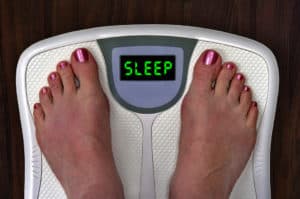Individuals keep a track of everything from calories to steps. But there is one metric which is always claimed, criticized, and condemned with regard to health- weight. This article talks about various metrics to measure health beyond weight.
Due to the emphasis on this particular figure, individuals, in general, believe it’s the most important parameter with regard to your health. It is not a definite measure. Your health really boils down to a couple of parameters taken into consideration. These incorporate age, muscle-fat ratio, height-weight ratio, gender, body composition, and various other clinical parameters.
Being overweight can predispose an individual to various health issues such as obesity, type 2 diabetes, hypertension, and cardiovascular diseases.
Not every person who has excess weight develops medical issues. Instead of hopping on the scale, you can count a few other aspects of your daily life to better measure your health. Here are nine to know about.
Metrics to measure health beyond weight
- Height to Weight Chart
One of the most widely used metrics by population is the height-to-weight ratio. The two primary parameters that impact your health – your height and weight are co-related using height and weight charts. It sets the standards for you to determine if your height and weight are in harmony, mirroring the state of your health
The height-weight chart can determine if you are the right weight according to your stature. This metric is used by several professionals to monitor the following:
- childhood growth and development
- weight management
- weight loss
Height and weight charts are standard tools that help analyze potential health issues. While these can help up to some extent, there’s no one-size-fits-all number for each individual. According to sources, a BMI evaluation is a screening instrument that can be calculated with the height-weight ratio, however, it shouldn’t be the single test depended upon for any conclusion.
When your ratio is deviating from the mean value, it can be used as an indication for health intervention. It may be helpful to schedule an appointment with your healthcare provider to ensure that no underlying health problems exist.
A reference chart for both men and women is given below
Height and Weight Chart For Men
| Height |
Weight |
|
| Inches | Centimeters | Kilograms |
| 4’6” | 137 | 28.5 – 34.9 |
| 4’7” | 140 | 30.8 – 38.1 |
| 4’8” | 142 | 33.5 – 40.8 |
| 4’9” | 145 | 35.8 – 43.9 |
| 4’10” | 147 | 38.5 – 46.7 |
| 4’11” | 150 | 40.8 – 49.9 |
| 5’0” | 152 | 4.1 – 53 |
| 5’1” | 155 | 45.8 – 55.8 |
| 5’2” | 157 | 48.1 – 58.9 |
| 5’3” | 160 | 50.8 – 60.1 |
| 5’4” | 163 | 5.0 – 64.8 |
| 5’5” | 165 | 55.3 – 68 |
| 5’6” | 168 | 58 – 70.7 |
| 5’7” | 170 | 60.3 – 73.9 |
| 5’8” | 173 | 63 – 70.6 |
| 5’9” | 175 | 65.3 – 79.8 |
| 5’10” | 178 | 67.6 – 83 |
| 5’11” | 180 | 70.3 – 85.7 |
| 6’0” | 183 | 72.6 – 88.9 |
Height and Weight Chart For Women
| Height |
Weight |
|
| Inches | Centimeters | Kilograms |
| 4’6” | 137 | 28.5 – 34.9 |
| 4’7” | 140 | 30.8 – 38.1 |
| 4’8” | 142 | 33.5 – 40.8 |
| 4’9” | 145 | 35.8 – 43.9 |
| 4’10” | 147 | 38.5 – 46.7 |
| 4’11” | 150 | 40.8 – 49.9 |
| 5’0” | 152 | 4.1 – 53 |
| 5’1” | 155 | 45.8 – 55.8 |
| 5’2” | 157 | 48.1 – 58.9 |
| 5’3” | 160 | 50.8 – 60.1 |
| 5’4” | 163 | 5.0 – 64.8 |
| 5’5” | 165 | 55.3 – 68 |
| 5’6” | 168 | 58 – 70.7 |
| 5’7” | 170 | 60.3 – 73.9 |
| 5’8” | 173 | 63 – 70.6 |
| 5’9” | 175 | 65.3 – 79.8 |
| 5’10” | 178 | 67.6 – 83 |
| 5’11” | 180 | 70.3 – 85.7 |
| 6’0” | 183 | 72.6 – 88.9 |
-
Body mass index ( BMI)
Body Mass Index is a common tool used to whether a person has an appropriate body weight corresponding to their height. It measures a person’s weight in relation to their height.
The National Institute of Health has divided individuals into three categories basis their BMI
- Underweight: A person having a BMI of less than 18.5
- Normal: A person having a BMI of between 18.5 and 24.9.
- Overweight: A person having a BMI between 25 and 29.9.
- Obesity: A BMI over 30 indicates obesity.
The BMI of a person can be calculated by diving the weight of an individual in kg by the square of the height of that individual in meters. Nowadays, various calculators are available online that can assess to calculate BMI.
-
Waist Circumference
Waist Circumference is one of the few metrics to measure health beyond weight. It is indicative of visceral fat, which is the fat that encompasses the inner organs. Visceral fat is a significantly more precise indicator of obesity-related health hazards than generally overall fat. This parameter can explain more about a person’s risk of developing diseases than weight.
It is used to evaluate the danger of different health conditions like stroke, sleep apnea, and coronary heart disease.
The normal range of waist circumference for both men and women is enlisted below:
- Men- A waist- circumference equal to or greater than 95 cm in men predisposes them to various health issues. If a man has a WC greater than 102 cm, he is at a substantially increased risk.
- Women-A waist- circumference equal to or greater than 80 cm in women predisposes them to various health issues. If a woman has a WC greater than 88 cm, she is at a substantially increased risk.
-
Waist-to-Hip Ratio
An individual’s waist-to-hip estimation compares their abdomen size and that of their hips. Research has indicated that individuals who have more body fat around their midsection are more vulnerable to metabolic syndromes such as cardiovascular diseases (CVD) and diabetes. Measurement of the hip ratio is taken exactly at the point of highest elevation of the hip.
The higher the waist circumference in relation to the hips, the more peculiar the hazard. Thus, the waist-to-hip ratio (WHR) is a helpful metric for figuring out whether an individual has a healthy weight and size.
In males
- Below 0.9: The risk of cardiovascular health problems is low.
- From 0.9 to 0.99: The risk is moderate.
- At 1.0 or over: The risk is high.
In females
- Below 0.8: The risk is low.
- From 0.8 to 0.89: The risk is moderate.
- At 0.9 or above: The risk is high.
-
Body Fat Percentage
Body fat percentage is one of the most important metrics while assessing the health of an individual. It is the weight of an individual\’s fat divided by their total weight.
It has two components essential fat and storage fat.
Essential Fat: An individual needs essential fat to endure. It plays a vital role in a wide range of bodily functions. For men, it is beneficial to have 2 to 4 percent of their body composition as essential fat. For females, the figure is 10 to 13 percent, as indicated by the American Council on Exercise (ACE).
Storage fat: Fatty tissue protects the inside organs in the chest and mid-region, and the body can utilize it as a source of fuel if required.
A high proportion of body fat can indicate a greater risk of:
- diabetes
- heart disease
- high blood pressure
- stroke
-
High Blood Pressure
Hypertension can expand the danger of coronary diseases or stroke and is known as the “silent killer” since it might not have clear symptoms, as per the American Heart Association (AHA).
In spite of the fact that you don’t really need to check your own pulse regularly, it\’s significantly important to keep up blood pressure in the normal range. The AHA suggests that individuals over age 20 with normal blood pressure should get it checked every one to two years. If you have hypertension or high blood pressure then your practitioner may suggest an alternate calendar.
At the point when hypertension is not in control, one serious complication that may emerge is atherosclerosis. Basically, exceptionally high blood pressure may add to the harm of significant vessels in your body.
Blood pressure can be measured with the help of an instrument called a sphygmomanometer. It is measured around the arm.
-
Cholesterol Levels
Cholesterol levels vary with gender, age, and weight. Over the long run, individuals’ body produces more cholesterol, therefore healthy adults should check their cholesterol levels every 2-4 years.
Cholesterol is categorized into three components:
- total cholesterol
- LDL, or ‘bad cholesterol”
- HDL, or ‘good cholesterol”
Recommended Levels Of Cholesterol
- Total serum cholesterol levels under 200 milligrams for every deciliter (mg/dL) are viewed under the normal range for adults. A reading somewhere in the range of 200 and 239 mg/dL is viewed as marginal high and that of 240 mg/dL or more is considered as high.
- LDL cholesterol should be less than 100 mg/dL. A reading between 130 to 159 mg/dL is borderline high and 160 to 189 mg/dL is high and is associated with various health conditions such are coronary heart disease, atherosclerosis, and cardiovascular diseases.
- HDL levels should be kept higher. A reading of less than 40 mg/dL is considered a major risk factor for heart disease.
There is no ideal way or metric to determine the health of an individual. There is no one size fits all thumb rule when it comes to assessing well-being. Numerous factors determine if a person is healthy or not. These include age, height, weight, waist circumference, etc.
If a person wants to lead a healthy lifestyle, it is extremely essential to consider all the metrics mentioned in this article. A healthy diet and lifestyle are the key to a healthy tomorrow.
Get started with your Weight Loss Journey today and take a step towards a healthy lifestyle! Stay tuned for inspiring Weight Loss Journeys, and Delicious Recipes! Also, don’t forget to follow us on Instagram for the daily dose of Health, and Wellness content!












